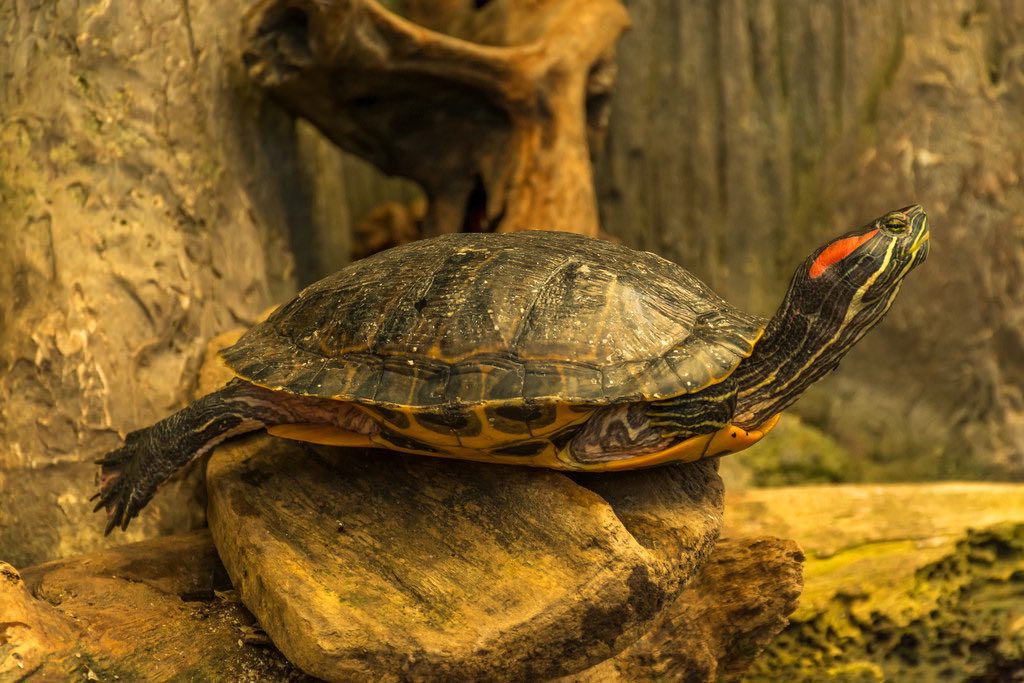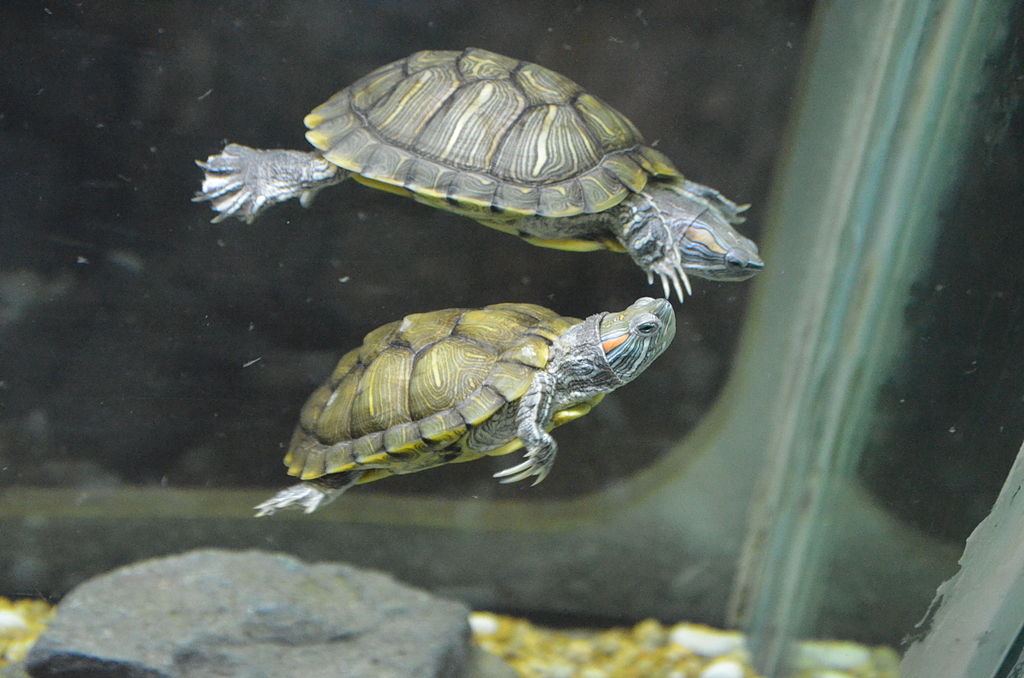CARE - HIBERNATION
Hibernation
Not all turtle species hibernate. Although many turtles need to hibernate, truly tropical species are active all year round. However, it’s important that the species which hibernate in the wild can also do so in captivity. As such, you should find out about your turtle’s behaviour in the wild. After hibernation, it’s time for females to lay eggs; females which haven’t hibernated can get confused and become egg-bound.
Winter rest
Your turtle’s hibernation is a natural break; in an artificial environment, you need to give nature a helping hand. Your heating element ensures that the temperature for your turtle remains the same all year round. If you want your turtle to hibernate, you’ll need to recreate a kind of winter.
- Lower the water temperature and the temperature on the island to about 17°C or 18°C. To do this, turn down your heating element.
- Leave the lamp on for less time every day. If it’s on 14 hours a day in summer, leave it on for about 8 hours in winter. If necessary, ensure that it’s less bright when turned on (fewer watts).
- Give your turtle less to eat. If you’re afraid of not giving it enough, put waterweed in the water as a back-up.
Keep a close eye on your turtle and increase the temperature and the amount of light and food it receives in early spring.
Hibernation
In nature, hibernation protects turtles from shortages of food and water.
As soon as it starts to get colder, turtles dig themselves into the ground. In captivity, of course, there aren’t any shortages of food or water, but it’s a good idea to let your turtle hibernate if your turtle is a species which hibernates!
- Start feeding your turtle a little less from October. Remove the paludarium’s heating element and leave the lamp on for about 8 hours a day.
- One week before actual hibernation is to begin, stop feeding your turtle. Your turtle’s digestive tract must be empty.
- Keep your turtle in a cool spot indoors (such as a basement). The paludarium’s water temperature should be between 4°C and 10°C; measure the water temperature constantly with a thermometer.
- Change the water regularly, keeping the water temperature constant.
- Weigh your turtle just before hibernation and weigh it every month during hibernation. If your turtle loses too much weight (more than a tenth of its body weight), you must wake it up.
- Check that your turtle is still asleep from time to time.
- In March or April, wake your turtle up. Gently increase the temperature and the amount of light and food it receives. When the water is warmer again, your turtle should wake up automatically within 2 to 7 days.
Problems may arise during hibernation, so diseased turtles, young turtles (<3 years) and small turtles (<10 cm) should not be allowed to hibernate. Even if you have taken precautions, your turtle may not survive hibernation. If something goes awry, it’s best to contact a vet.


